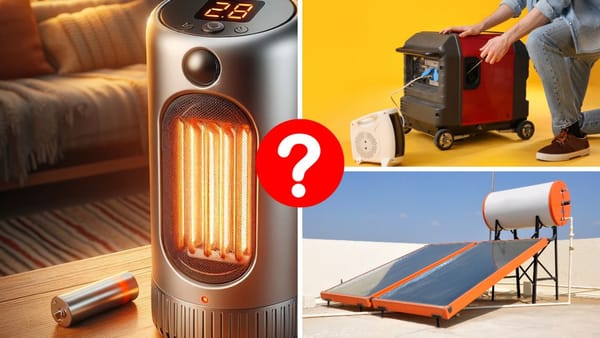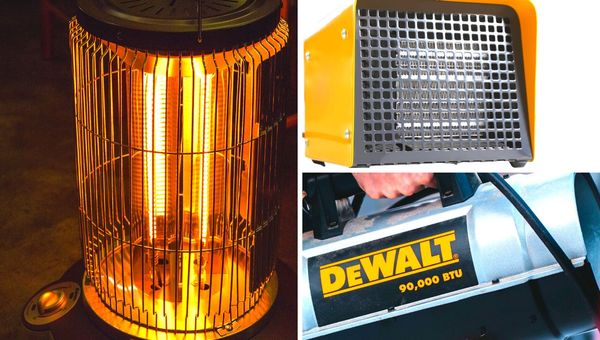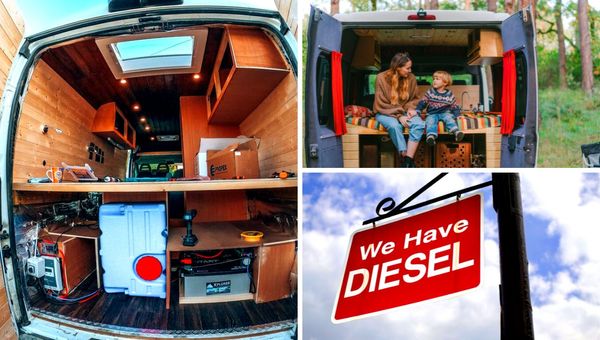If you’re wondering “how long will a heater run on a battery?”, you’re in the right place. This article cuts straight to the chase, offering you direct insights into determining your heater’s battery life. We’ll assess key factors like wattage, battery capacity, and temperature considerations that influence run time. Embrace the knowledge on optimizing your heater’s efficiency and learn how to make the most out of your battery-powered heat source. Dive in and discover practical tips and calculations to keep your space warm, wherever you are, without excess fluff.
Key Takeaways
- Car batteries have a limited amount of ‘juice’ (amp hours), and higher wattage heaters will drain them faster; temperature settings also play a major role in the battery’s drain rate.
- For lengthy heat supply, deep cycle batteries are much preferred over regular car batteries due to their ability to withstand longer discharges and higher amp-hour ratings.
- Non-electric heating alternatives like gas & propane heaters can be efficient and eco-friendly; optimizing thermostat settings and ensuring proper insulation can greatly conserve battery power.
Understanding Battery Power0 and Heater Energy Requirements
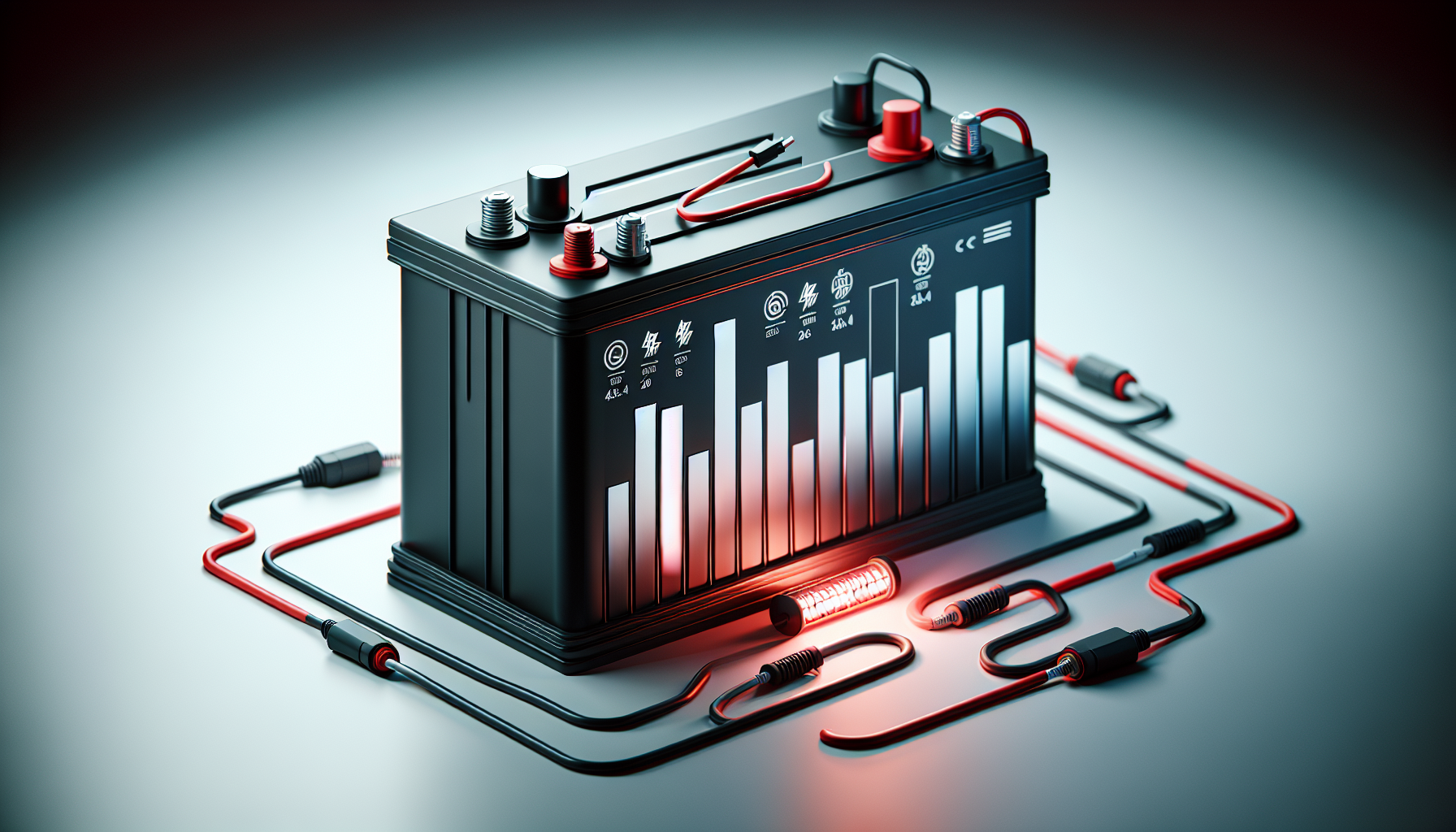
Before proceeding, you must grasp the significance of a car battery’s capacity in fueling your heater. You see, the capacity is like the fuel tank of your car - it determines how long your heater can run without needing a recharge. Think of a car battery as a reservoir holding about 48 amp hours of power. The more power your heater consumes, the faster that reservoir is drained.
At this point, the role of wattage becomes apparent. The wattage of a heater is like its appetite for energy - the higher the wattage, the more power it gulps down. This directly impacts how long your battery can keep the heater running. For instance, a space heater, which usually uses about 1,500 watts, will drain a car battery faster than a lower-wattage LED light.
The Role of Amp Hours in Battery Capacity
To deepen your understanding of battery capacity, we will explore the concept of amp hours (Ah). Think of amp hours as a measure of the “juice” a battery has. The higher the amp hour rating, the longer the battery can last on a single charge. So, if your heater is like a thirsty runner, a battery with a higher Amp Hour rating is like a bigger water bottle - it can quench the runner’s thirst for a longer time.
Another important concept is watt-hours, which shows the total energy a battery can deliver. It’s like knowing how many miles your runner can cover with that water bottle. This applies whether you’re using one battery or a whole battery bank.
Wattage and Temperature: How They Affect Heater Operation
In the context of heater operation, wattage and temperature settings closely correlate. They go hand in hand, affecting how much heat the heater can generate and how much energy it uses. It’s like turning up the speed on a treadmill - you’ll burn more energy and get hotter, but you’ll also drain your energy reserves faster.
High-wattage heaters are like sprinters, using a lot of power to generate a lot of heat quickly, which can drain your battery faster. On the other hand, low-wattage heaters are more like marathon runners, using power more slowly, which can extend your battery run time. Don’t forget though, extreme temperature settings can also affect your battery life.
Calculating Your Heater's Draw from a Car Battery
Now, we will delve into some technical details. Figuring out how much power your heater takes from a car battery is like doing a budget - you need to know where your money (or in this case, power) is going. The formula is simple: Power (Watts) = Voltage (V) x Current (Amps).
Several factors influence how much power your heater uses from the car battery. These include:
- The heater’s wattage
- The battery capacity
- The battery’s age and condition
- The ambient temperature
A heater that uses less power will drain the car battery slower, giving you more heater run time.
So, if you want to estimate how long your heater will run on a car battery, just look at the wattage. For example, a medium wattage space heater (around 1,000 Watts) will last for about 10 hours on a battery.
Selecting the Right Battery for Your Heater
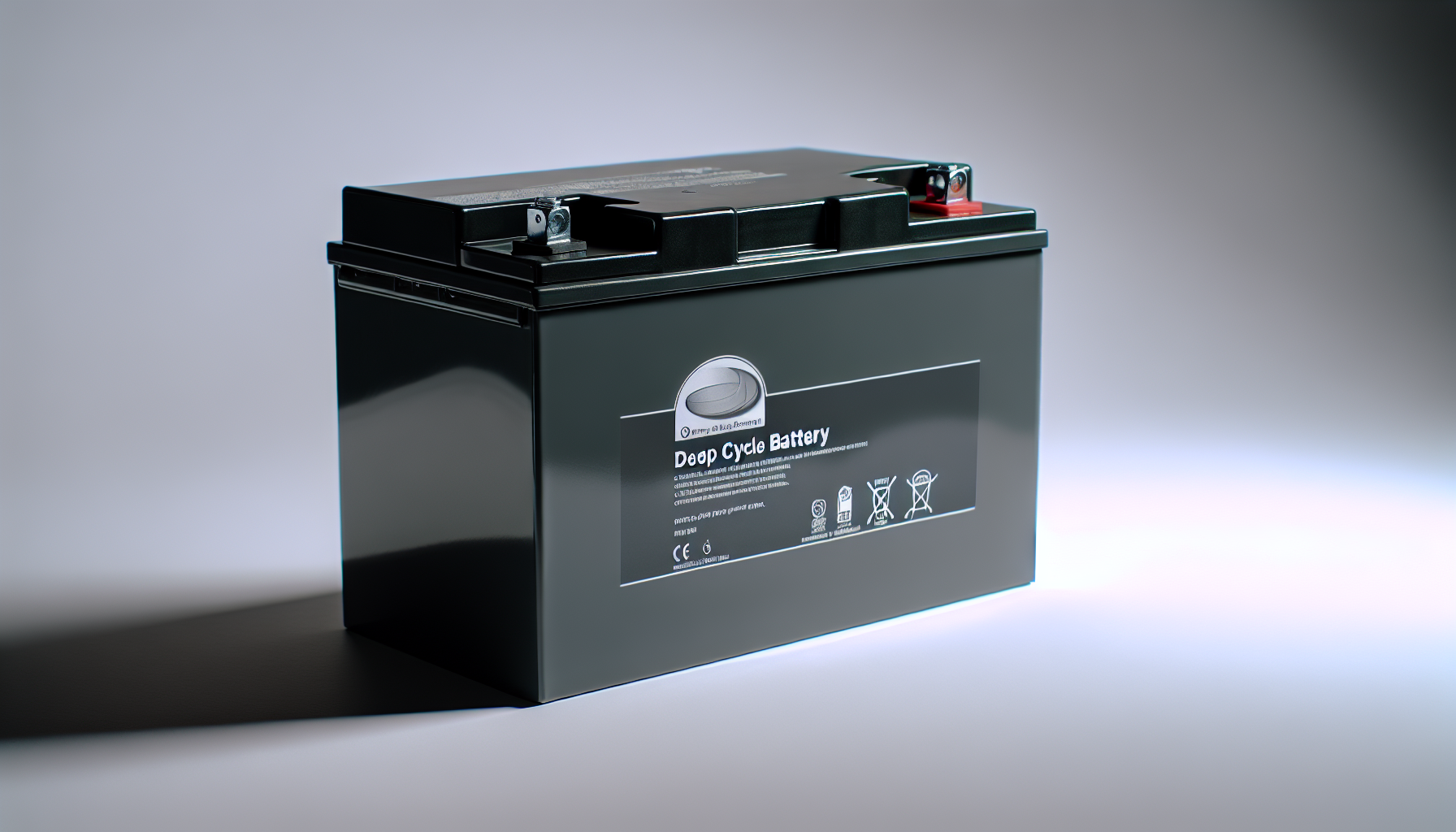
Having addressed the basic aspects of battery power and heater requirements, we will now discuss how to select the most suitable battery for your heater. It’s a bit like choosing the right breed of dog - you need to consider factors like size, temperament, and how it fits with your lifestyle.
Lithium batteries, especially lithium thionyl chloride batteries, are the top dogs here. They handle high temperatures like a champ and provide a steady stream of energy, making them perfect for heaters. To figure out what size battery you need for your heater, just multiply the current flow (in amps) by your desired discharge time (in hours). Just remember, a well-kept battery is crucial for efficient heater operation.
Deep Cycle Batteries: The Optimal Choice for Heaters
But among all battery types, deep cycle batteries truly shine when it comes to powering heaters. These batteries are like endurance athletes, designed to keep the power running for a long time and handle deep discharges without breaking a sweat. Their high discharge rate allows for depth of discharge (DoD) up to 80%, making them perfect for heaters that need a constant power supply.
Compared to regular car batteries, which are optimized for short bursts of high power for starting engines, deep cycle batteries have thicker lead plates that provide a longer supply of electricity. This makes them better suited for the long-haul task of powering heaters.
Sizing Up Your Battery Bank for Extended Heat
If you’re planning to run your heater for extended periods, you’ll need to size up your battery bank - think of it as adding more fuel tanks to keep your heater running longer. A battery bank stores energy from renewable sources and uses it when there’s not enough being generated.
The size of your battery bank is determined by factors like:
- the wattage of your heater
- battery capacity
- battery age
- temperature
Remember, the runtime of a heater on a battery bank can change based on the battery bank size. For a 2kW load, it’s expected to run from 1.1 to 1.7 hours on a set of T-105 batteries.
A battery bank of 850Ahrs, suitable for a trailer battery, is suggested for a 5-hour runtime.
Keeping Your Battery in Good Shape for Maximum Efficiency
Now, we will discuss the topic of battery maintenance. Keeping your battery in good shape is like regular exercise for your body - it improves performance and extends life expectancy. To keep your battery in top shape, it’s best to charge it to 50% every six months, get a professional to check it at least once a year, and perform a quick check every month.
When storing your batteries, find a cool, dry spot at normal room temperature, keep them facing the same way, and use plastic caps to prevent corrosion. Proper battery maintenance ensures the longevity and efficiency of your heater.
Practical Scenarios: Estimating Heater Run Time on a Single Charge
Having discussed the technical aspects, it’s time to synthesize this information and consider some practical scenarios. Imagine you’re going camping in the wilderness, and you need to estimate how long your heater will last on a single charge. You’d need to consider factors like:
- the wattage of your heater
- battery capacity
- battery age and condition
- environmental temperature
The type and size of your battery can greatly impact your heater’s runtime. For instance, a typical portable heater using around 1000 watts can run for about 1 hour on a single battery charge. But remember, extreme temperatures can also affect your battery life and heater efficiency.
Dry Camping and Power Conservation
Suppose you are dry camping, which involves camping without access to electricity or water hookups. How can you conserve power for your heater? Here are some tips:
- Use portable gas or propane heaters instead of relying on the RV furnace extensively, as it consumes a lot of power.
- Use heated blankets to keep warm instead of relying solely on the heater.
- Use ground cloths to insulate the floor and retain heat, reducing the need for the heater.
By following these tips, you can save battery power while staying warm during your dry camping trip.
To figure out how much power you need for your heater during dry camping, simply divide the wattage of your heater by the voltage of your power supply. For example, a 375-watt heater running on a 12-volt system would require 31.25 amps.
Battling the Cold Night with Efficient Heater Use

On a freezing cold night, your car heater can keep running for almost two days on a single battery charge. But, to make the most of your battery power, it’s important to use your heater wisely.
To save on power, consider setting wider temperature ranges and not constantly adjusting the temperature. Also, using energy-efficient heaters like ceramic fan heaters and infrared heaters can help extend your battery run time.
When More Power is Needed: Adding More Batteries
In some scenarios, one battery might not be enough to power your heater for an extended period. In such cases, consider adding more batteries to your setup. This can help avoid underperformance or battery damage in colder seasons and can also cut down on electricity costs for industrial heating.
When connecting multiple batteries, you can either connect them in series for a higher voltage or in parallel for a higher current. To figure out the extra run time, divide the total battery capacity by the heater’s power usage. Remember, setting up batteries in series or parallel will change the power output and run time.
Alternative Heating and Power Solutions
Not all heating solutions depend solely on battery power. There are alternative heating and power options that can supplement or even replace battery power. Gas and propane heaters, for instance, convert fuel into heat without needing electrical power.
Generators can be a solid backup power source for heaters, ensuring important systems keep running when the power goes out. However, they can be loud and might require a significant initial investment. Solar panels, on the other hand, offer a green and renewable source of power, but they require energy storage for when sunlight is scarce.
Shore Power: A Reliable Source for Continuous Heat
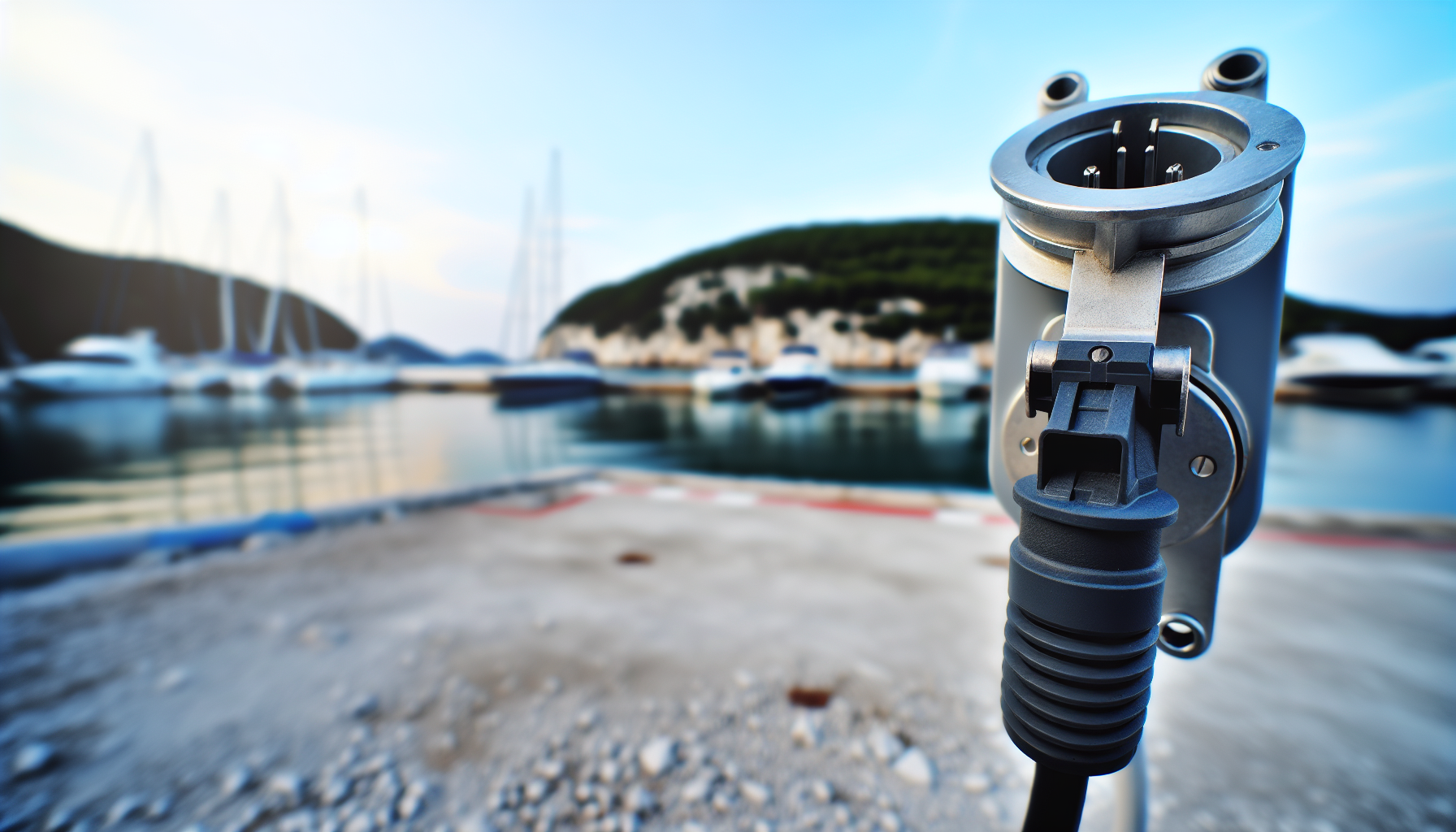
Shore power is an external power source typically used when you’re hooked up to a power pedestal at a campground or marina. It’s a reliable source of continuous heat, particularly useful in RVs and boats to run electric heaters.
Shore power is not only reliable but also cost-effective. It can save you money, reduce air pollution, and decrease fuel consumption and wear on auxiliary/generator systems.
To get your heating system to work on shore power, follow these steps:
- Make sure it’s connected to the RV electrical system and the battery is charged.
- You might also need to choose the electric heat option on your thermostat.
- Alternatively, you can use a power inverter to connect it to the mains electricity supply.
By following these steps, you can ensure that your heating system is working efficiently on shore power.
Generators and Solar Panels: Supplementing Your Battery Bank
Generators and solar panels can provide additional power for your heater and led lights, supplementing your battery bank. Generators can keep the power going non-stop, but they require fuel and maintenance.
To connect a generator to your battery bank, follow these steps:
- Make sure the generator has an alternator.
- For wind generators, use a shunt charger to control the power going to the battery bank.
- The battery bank then powers the heater.
To use solar power for heating, connect the panels to a charge controller, then connect that to an inverter, and finally connect the inverter to the battery bank and the heater.
Gas and Propane Heaters: Non-Electric Alternatives
For those seeking non-electric alternatives, gas and propane heaters are excellent options. These heaters offer the following benefits:
- They convert the fuel into heat, reducing reliance on your car battery.
- They’re often more efficient and cost-effective than electric heaters.
- They are a popular choice for many.
Gas and propane heaters are:
- Efficient
- Eco-friendly, producing fewer emissions than traditional heaters
- Quick to heat up
- Non-toxic
- Cost-effective
- Help save on water heating and clothes drying.
Enhancing Battery Life and Heater Efficiency
Having covered all the essentials, we will now explore strategies to improve both battery life and heater efficiency. Tweaking the heater and thermostat settings can help the battery last longer. For instance, running the furnace without the furnace fan and adjusting the thermostat settings can conserve battery power.
Proper battery care can also enhance its performance and lifespan. Regular use, proper charging, and avoiding overcharging can ensure your battery remains in top condition. Additionally, good insulation can reduce heater load, conserving battery power and improving heater efficiency.
Optimizing Thermostat Settings for Lower Power Consumption
Optimizing thermostat settings can significantly reduce power consumption. Here are some tips for optimizing your thermostat settings:
- Set the thermostat between 68°F (20°C) and 78°F (25°C) to save battery energy.
- Adjust the thermostat according to your daily routine.
- Avoid making big temperature changes when you’re not home.
- This can ease the load on your HVAC system and prevent unnecessary power use.
Additionally, maintaining your thermostat settings just right helps the battery last longer and ensures it works efficiently with the heating system. So remember, a little tweaking here and there can save you a lot of power (and money!) in the long run.
Insulation as a Key Factor in Reducing Heater Load

Good insulation is like a snug blanket for your heater - it keeps the heat in, reducing the load on your heater and conserving battery power. The best insulation materials for retaining heat are:
- fiberglass
- rock and slag wool
- cellulose
- natural fibers
In addition to keeping the heat in, good insulation can also help save battery power by maintaining a stable temperature. This means your heater doesn’t have to work as hard, which can extend the battery life and improve heater efficiency.
Recharging Strategies: Keeping Your Battery Bank Ready
Finally, we will discuss strategies for recharging your battery bank. After all, a well-charged battery is key to ensuring your heater runs smoothly. The best way to recharge a deep cycle battery bank is to drain it down and then recharge it to full capacity, avoid extreme conditions, and use suitable chargers.
However, remember that temperature can affect how fast a battery recharges. In cold conditions, the battery may not hold as much charge and might wear out faster. In hot conditions, while the battery may hold more charge, it could wear out quicker.
To stay safe while recharging a battery bank, make sure to follow safety protocols like using a non-flammable surface, removing jewelry, and wearing protective gear.
Summary
In conclusion, understanding how long a heater will run on a battery involves a deep dive into battery power, heater requirements, and how these two intertwine. From understanding amp hours and wattage to choosing the right battery and optimizing thermostat settings, every aspect plays an integral part in ensuring you stay warm and cozy on those cold nights. So next time you’re stuck in a chilly car, remember that with the right knowledge and techniques, you can conquer the cold with confidence.
Frequently Asked Questions
How long will a 12V battery run a heater?
A 12V battery can run a 1500 Watt heater for around 24 minutes. If you add three more batteries, it can run for approximately 84 minutes.
Will camper furnace run on battery?
Yes, the camper furnace will run on the battery because it uses 12v power to ignite the propane and run the fan, making it the biggest battery drain in your RV. It will continue to function as long as the battery has power.
How long can you run an RV on battery?
The duration an RV can run on battery power varies from 2 to 7 days, based on the power consumption and battery efficiency. It's important to select high-quality, efficient batteries for longer trips.
How many amps does a RV heater use?
RV heaters can use up to 10-15 amps. Be sure to check the specific model of your RV heater for the exact amp draw.
What factors affect how long a heater will run on a battery?
The wattage of the heater, battery capacity, battery age and condition, and ambient temperature all affect how long a heater will run on a battery. These factors play a significant role in determining the heater's battery life.
Thank you for reading this article, and happy shopping!
Your Friend,
Karie

Are battery operated space heater safe





